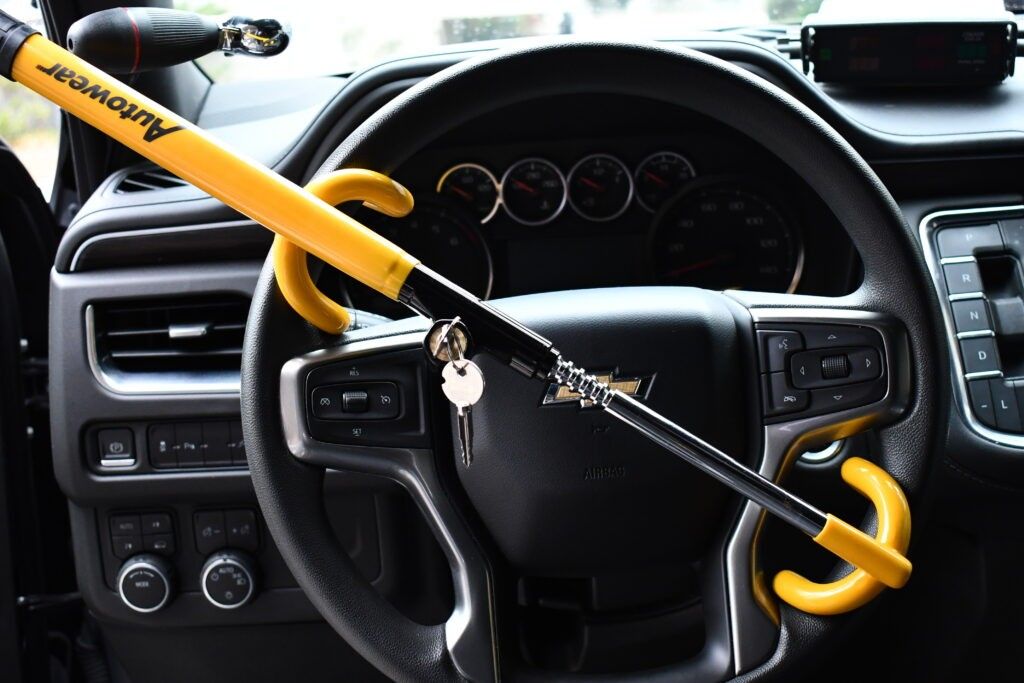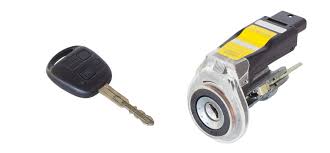Steering Wheel locked? Don't Panic! Mechanic's Guide to Unlocking It (Fast!)
Published On 3/7/2024, 4:04:18 am Author Uttkarsh SinghIs your car's steering wheel locked and you're stranded? Don't call a tow truck yet! This mechanic's guide gives you quick tips to unlock it yourself and explains when to call a pro. Easy fixes & preventative maintenance included!

You're in a rush, maybe late for work or an appointment, and suddenly your car refuses to cooperate. The steering wheel is frozen solid, and panic starts to set in. But before you envision the dreaded tow truck bill, take a deep breath and let this old gearhead guide you through the situation.
Let me tell you, as a mechanic with grease under my fingernails and a toolbox overflowing with solutions, I've seen my fair share of white-knuckled drivers facing a locked steering wheel.
Now, there are a couple of reasons why your trusty chariot might be throwing a steering wheel tantrum. The first culprit is the ignition lock cylinder itself. Think of it like a handshake between your key and the car. Over time, wear and tear can cause this handshake to get a little clumsy. The tiny pins and tumblers inside the cylinder can become worn or misaligned, making it difficult for your key to turn smoothly and unlock the wheel.
The other troublemaker is the steering wheel lock mechanism within the steering column. This complex system is a marvel of engineering, but even marvels can malfunction sometimes. Internal components like springs or locking pins can get jammed or misaligned, preventing the wheel from unlocking even if your key turns perfectly.
Understanding the Lock

Since we're focusing on cars without push-button ignitions, the first suspect we need to investigate is the trusty ignition lock cylinder.
Imagine this cylinder as a tiny gatekeeper standing guard over your car's soul (or engine, if you will). It's a metal tube with a series of slots and pins inside. When you insert your key, the unique grooves and ridges on the key interact with these pins, pushing them up and down in a specific sequence. This precise sequence allows the cylinder to rotate freely, sending a signal to the car's brain (the electronic control unit or ECU) that the correct key is present.
Here's where things can go awry:
Wear and Tear: Over time, the constant friction between your key and the cylinder's pins can cause them to wear down or become misaligned. It's like a well-worn doorknob that gets a little sticky – the key might not push the pins up high enough to unlock the cylinder smoothly.
Debris and Dirt: Tiny dust particles or even bits of broken key can jam the intricate mechanism inside the cylinder. Think of it like a jammed lock on your house door – a misplaced grain of sand can throw the whole system off.
Bent or Damaged Key: Let's face it, keys go through a lot. They jingle in our pockets, get dropped, and sometimes even take a tumble in the washing machine. A bent or damaged key won't engage the pins in the cylinder correctly, preventing it from turning and unlocking the steering wheel.
Now, let's shift our focus to the other potential troublemaker – the steering wheel lock mechanism itself. This complex system resides within the steering column, the long metal shaft that connects your steering wheel to the car's front wheels. Here's the gist of how it works:
The Locking Pin: This is like a master switch for your steering wheel. When the ignition lock cylinder is unlocked (thanks to your key!), it sends a signal that disengages the locking pin within the steering column. This allows the wheel to turn freely.
The Interlock Mechanism: This clever system acts as an additional layer of security. It ensures the car is in park (automatic) or neutral (manual) before allowing the steering wheel to unlock. It's like a responsible babysitter making sure everything is safe before letting you play with the steering wheel.
Springs and Gears: A network of springs and gears work together to physically move the locking pin into and out of the engaged position. Over time, these components can wear out, become misaligned, or even break, causing the steering wheel to lock up unexpectedly.
DIY Fixes for a Locked Steering Wheel: A Mechanic's Gentle Touch
Alright, now that we've dissected the potential culprits behind a locked steering wheel, let's get down to the good stuff – how to potentially fix it yourself and avoid the dreaded tow truck! Remember, these are gentle maneuvers you can try, but if things get tough, don't hesitate to call in a professional.
For the Ignition Lock Cylinder:
The Jiggle and Turn: This might seem counterintuitive after what we discussed earlier, but a very gentle jiggle of the key while you're slowly turning it can sometimes break the bind between the key and the worn pins inside the cylinder. Think of it as a coaxing motion, not a forceful one.
The Wiggle and Release: Here's another gentle technique. Try inserting the key and turning it slightly to the "on" position (not all the way to start). Then, with very light pressure on the key, gently wiggle the steering wheel back and forth in small increments. Sometimes, this slight movement can help dislodge any debris or misaligned pins that might be causing the lockup.
For the Steering Wheel Lock Mechanism: The Neutral Gear: This is a simple but often overlooked fix. If you have a manual transmission and forgot to put the car in neutral before removing the key, the steering wheel lock might be engaged as a safety feature. Simply shift the car into neutral and try turning the key again.
The Straight Wheel: If you left your car parked with the wheels turned sharply to one side for a long time, the pressure on the steering mechanism might be causing it to bind. Try gently turning the steering wheel in the opposite direction while turning the key. Straightening the wheels can sometimes relieve the pressure and allow the lock to disengage.
Important Reminders:
Be Gentle: These are all about finesse, not force. Forcing the key or the steering wheel can damage the delicate mechanisms and make the situation worse.
Don't Use Tools: There's no need for screwdrivers or pliers here. These tools can easily break the lock cylinder or damage the steering column, leading to a much more expensive repair.
When in Doubt, Call a Pro: If these gentle maneuvers don't work after a few tries, don't get discouraged. It's time to call a trusted mechanic. They have the tools and expertise to diagnose the problem and unlock the steering wheel safely, getting you back on the road quickly.
















